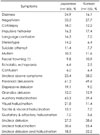1. Rhi BY. [Psychiatric care and its change under the Japanese government in Korea with the special reference to the clinical activities at the Colonial Government Hospital: 'Chosun-Chong-Dok-Bu Ui-Won' (1913-1927)]. Korean J Med Hist. 1994; 3:147–169.
2. Rhi BY. Hundred Years' Psychiatry in Korea (1899-1999). Korean J Med Hist. 1999; 8:157–168.
3. Lee NM, Rhi BY. The Introduction of the Western Psychiatry into Korea (1): from the mid seventeenth century to 1911, the time of Japanese forced annexation of Korea. Korean J Med Hist. 1999; 8:233–268.
4. Chung WY. History of modern western psychiatry in Korea. From early 1920s to 1945 [dissertation]. Seoul: Seoul National University;1997.
5. Chung W, Lee NM, Rhi BY. The Introduction of Western Psychiatry into Korea (II) Psychiatric Education in Korea during the Forced Japanese Annexation of Korea (1910-1945). Korean J Med Hist. 2006; 15:157–187.
6. Kee CD. Kyongsong Imperial University Medical College. Korean J Med Hist. 1992; 1:64–82.
7. Lee MY. A History of Christian Medical Work in Korea. Seoul: Acanet;2003.
8. Yeo IS. The Establishment of SUMC (Severance Union Medical College) Psychiatry Department and the Formation of Humanistic Tradition. Korean J Med Hist. 2008; 17:57–74.
9. The department of psychiatry, Yonsei University College of Medicine. The foundation of the Department of Psychiatry, Severance Union Medical School. Seoul: The department of psychiatry, Yonsei University College of Medicine;2006.
10. Min SK. Professor Charles I. McLaren, MD (1) : His Life and Medical Philosophy. J Korean Neuropsychiatr Assoc. 2011; 50:172–186.
11. Min SK. Professor McLaren (2). His Theories of Psychiatry. J Korean Neuropsychiatr Assoc. 2012; 51:25–35.

12. Min SK. Faith and life achievement of Professor McLaren. Seoul: Yonsei University Press;2013.
18. Korean Neuropsyciatric Association. One hyndred years' history of psychiatry in Korea. Seoul: Korean Neuropsyciatric Association;2009.
19. The department of psychiatry, Seoul National University College of Medicine. History of the department of psychiatry, Seoul National University College of Medicine. Seoul: The department of psychiatry, Seoul National University College of Medicine;2008.
20. Bhugra D, Littlewood R. Colonialism and Psychiatry. New Delhi: Oxford University Press;2001.
21. Kim OJ. Physical Anthropology Studies at Keijo Imperial University Medical School. Korean J Med Hist. 2008; 17:191–203.
145. Lee BH. Modern approach to treating mental patients in colonial Chosun. Korean J Med Hist. 2013; 22:529–578.

149. Yoon HD, Hur S, Lee YK, et al. Reading again the modern. Seoul: Yeoksa Bipyeong-sa;2006. p. 51–57.
150. McLaren CI. An hypothesis concerning the relationship between the body and the mind. Seoul: Research Department Severance Union Medical College;1928.
151. McCulloch J. Colonial Psychiatry and the African Mind. Cambridge: Cambridge University Press;1995. p. 1–8.
153. Kraepelin E. Vergleichende psychiatrie. Zbl Nervenheilk. 1904; 27:433–437.

154. Roelcke V. Biologizing social facts: an early 20th century debate on Kraepelin's concepts of culture, neurasthenia, and degeneration. Cult Med Psychiatry. 1997; 21:383–403.
155. Kirmayer LJ. Cultural psychiatry in historical perspective. In : Bhugra D, Bhui K, editors. Textbook of Cultural Psychiatry. Cambridge, UK: Cambridge University Press;2007. p. 3–19.
156. Engstrom EJ. 'On the question of degeneration' by Emil Kraepelin (1908). Hist Psychiatry. 2007; 18(71 Pt 3):389–404.

157. Hoff P. Kraepelin and degeneration theory. Eur Arch Psychiatry Clin Neurosci. 2008; 258:Suppl 2. 12–17.

161. Rhee DS. The present men and stress. Seoul: Hangansu;2012.






 PDF
PDF ePub
ePub Citation
Citation Print
Print




 XML Download
XML Download